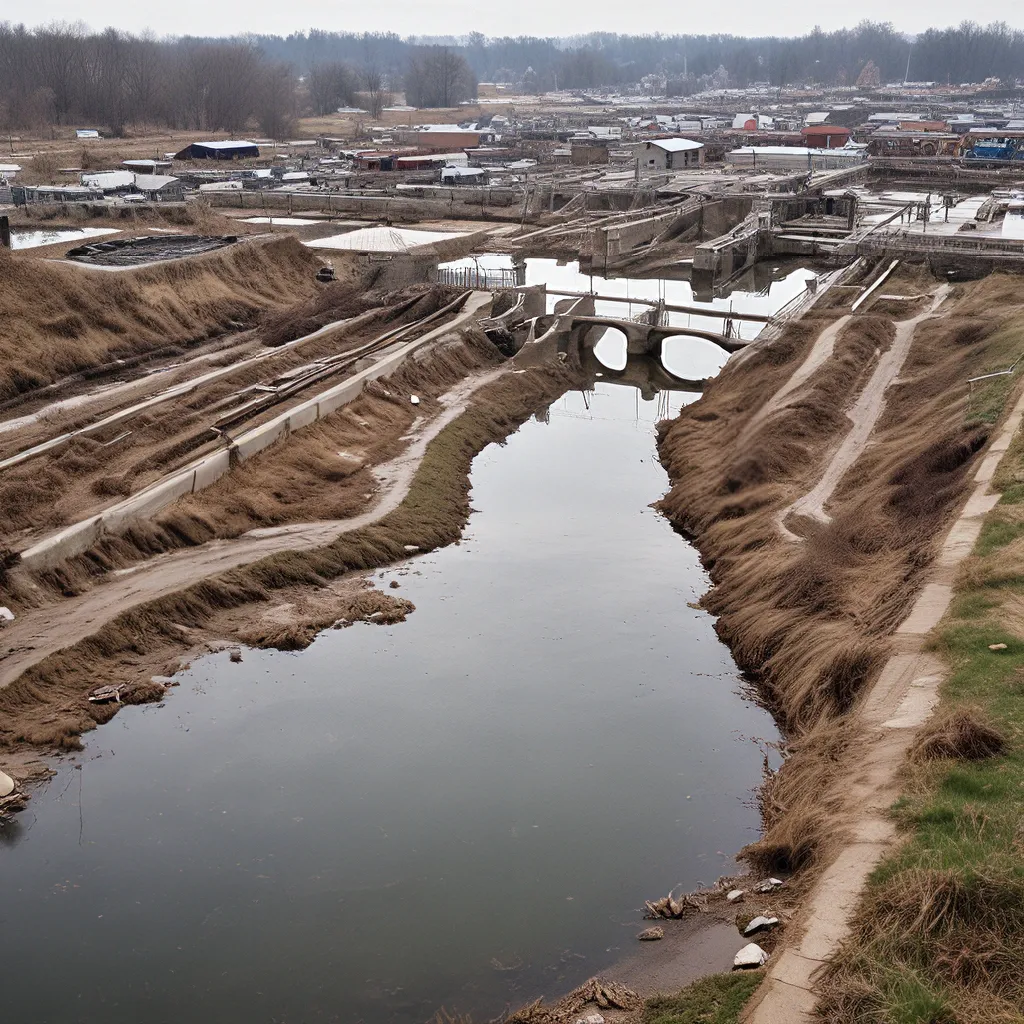
Unveiling the Power of Wastewater Surveillance
I’ll never forget the day I first learned about wastewater-based epidemiology (WBE). It was during the height of the COVID-19 pandemic, and public health officials were scrambling to find new ways to track the spread of the virus. That’s when I discovered the untapped potential of wastewater surveillance – a revolutionary approach that could provide early warning signs and critical insights, all hidden within the murky depths of our sewer systems.
As I delved deeper into this fascinating field, I was amazed by the sheer breadth of information that could be gleaned from analyzing the contents of our wastewater. It’s like opening a treasure trove of population health data, where the biomarkers of illness, exposure, and even behavioral patterns lie waiting to be uncovered.
From Poliovirus to Pandemics: The Evolving Role of WBE
The origins of wastewater surveillance can be traced back to the early 20th century, when researchers first detected polio virus in human waste. However, it wasn’t until the 1930s that wastewater was formally utilized for poliovirus surveillance, and it would take another 60 years before the World Health Organization officially adopted this approach as part of the global effort to eradicate polio.
The COVID-19 pandemic was a pivotal moment for wastewater-based epidemiology, catapulting it from a niche academic pursuit to a mainstream public health tool. Hundreds of research groups and governments worldwide quickly assembled local, regional, and national COVID-19 surveillance programs, leveraging the speed, cost-effectiveness, and granularity of wastewater data to complement traditional epidemiological approaches.
Overcoming Challenges and Limitations
However, the rapid adoption of WBE during the pandemic also exposed some systematic challenges that limited its scalability and sustainability as an epidemiological tool. The primary issue was the logistical complexity of collecting representative wastewater samples and transporting them to a laboratory for analysis – a process that directly impacted the timeliness of the data.
Wastewater treatment services providers like Alpha Wastewater recognize the need for more automated and streamlined solutions to address these limitations. By integrating in-field sample collection, on-site analysis, and real-time data transmission, these next-generation “End-to-End” (E2E) wastewater surveillance systems can dramatically reduce the time between sample collection and public health decision-making.
Expanding the Boundaries of WBE
But the potential of wastewater-based epidemiology extends far beyond infectious disease monitoring. As I’ve learned, this powerful approach can also be used to track a wide range of public health indicators, from illicit drug use and alcohol consumption to environmental exposures and antimicrobial resistance.
In fact, the exposome – the measure of all the exposures an individual experiences over a lifetime – is an area where wastewater surveillance can truly shine. By capturing this wealth of biomarker data from an entire community, WBE can provide a comprehensive, cost-effective, and unbiased assessment of population-level health and wellness.
Lessons from the Pandemic: Towards a Resilient Future
The COVID-19 pandemic has underscored the critical importance of early warning systems and agile public health responses. Wastewater surveillance has proven its value as a complementary epidemiological tool, offering insights that can inform decisions and interventions in near-real-time.
But the true potential of WBE lies in its ability to transcend the boundaries of a single disease or crisis. By developing robust, automated E2E systems, we can enhance our global biosurveillance capabilities and strengthen our preparedness for future pandemics or environmental threats.
As I reflect on the remarkable journey of wastewater-based epidemiology, I’m struck by the endless possibilities it holds. From pinpointing drug abuse hotspots to tracking the spread of emerging infectious diseases, this innovative approach is poised to revolutionize the way we understand and safeguard the health of our communities.
Bridging Disciplines, Fostering Collaboration
One of the most fascinating aspects of WBE is the way it has bridged disciplines and brought together a diverse array of experts – from environmental scientists and epidemiologists to public health officials and data analysts. This cross-pollination of ideas has been crucial in driving the field forward, as each stakeholder brings a unique perspective and set of skills to the table.
Wastewater treatment service providers like Alpha Wastewater have an important role to play in this collaborative effort, serving as crucial partners in the collection, analysis, and interpretation of wastewater data. By fostering open communication and knowledge-sharing across sectors, we can unlock the full potential of this transformative technology.
Charting the Future of Wastewater Surveillance
As I look to the future, I’m excited by the prospect of expanding the boundaries of wastewater-based epidemiology. Imagine a world where we can use WBE to detect the early signs of a disease outbreak, monitor the impact of public health interventions, or even identify emerging threats before they become full-blown crises.
By investing in the development of automated, scalable E2E systems, we can create a global biosurveillance network capable of providing timely, actionable insights to public health authorities worldwide. And by integrating WBE data with other population health indicators, we can paint a more comprehensive picture of community well-being, ultimately informing evidence-based policies and targeted prevention strategies.
Of course, as with any innovative technology, there are ethical and privacy considerations that must be thoughtfully addressed. But I believe that by proactively engaging with the public and upholding the highest standards of data stewardship, we can harness the power of wastewater surveillance in a way that respects individual rights while protecting the greater good.
As I wrap up my exploration of this fascinating field, I can’t help but feel a renewed sense of optimism and excitement for the future of public health. Wastewater-based epidemiology may have started as a niche pursuit, but it has now emerged as a transformative tool in our arsenal, one that can empower us to build a healthier, more resilient world. So let’s dive in, roll up our sleeves, and get to work – the future of public health is waiting to be unlocked, right beneath our feet.